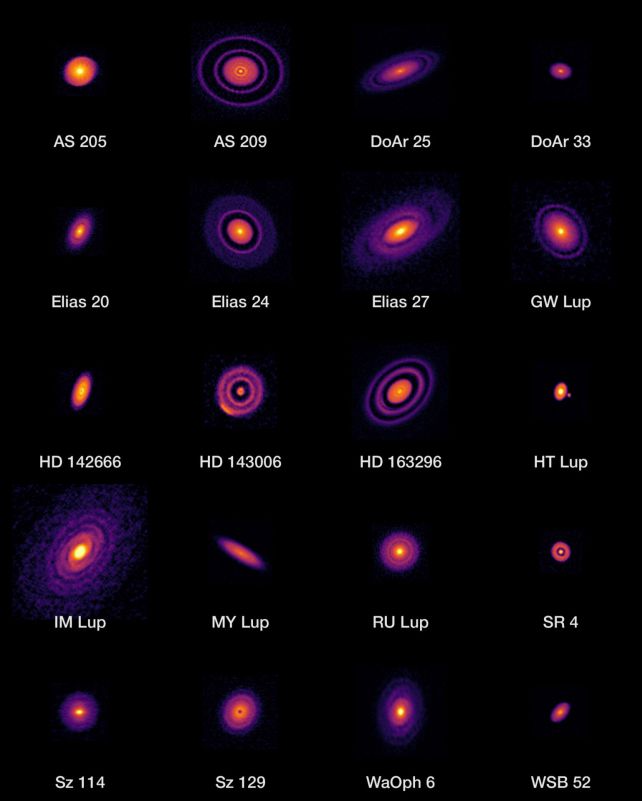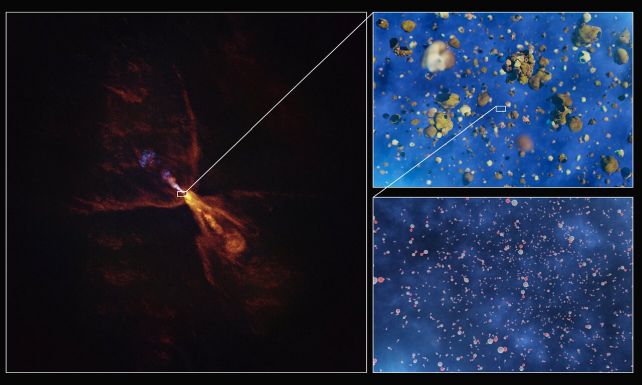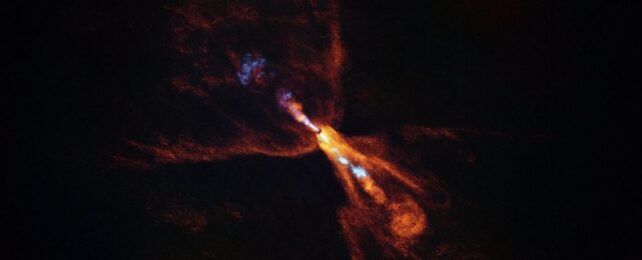Around a Sun-like star just 1,300 light-years away, a family of planets has been seen in its earliest moments of conception.
Astronomers analyzed the infrared flow of dust and detritus left over from the formation of a baby star called HOPS-315, finding tiny concentrations of hot minerals that will eventually form planetesimals – the 'seeds' around which new planets will grow.
It's a system that can tell us about the very first steps of planet formation, and may even contain clues about how our own Solar System formed.
"For the first time, we have identified the earliest moment when planet formation is initiated around a star other than our Sun," says astronomer Melissa McClure of Leiden University in the Netherlands.
Related: The Oldest Known Material on Earth Is Officially Older Than The Solar System

By studying other stars at different stages of the process, we more or less know how planets are born.
Stars themselves form from dense clouds of molecular gas and dust in space; when a clump of material in these clouds is dense enough, it collapses under gravity to form the seed of a star.
As the baby star spins, the material around it coalesces into a disk that whirls around and feeds the star's growth. When the star grows large enough, its protostellar winds push the material out of reach, where it continues to orbit, cooling and clumping together. This is the beginning of the planet formation process.
Astronomers have seen baby planets forming in these protoplanetary disks, leaving noticeable gaps in the material as they travel, gravitationally clearing the path of their orbit.
However, the planets in these systems were already pretty well formed. HOPS-315 represents the earliest stage at which we've ever seen the process of planet formation.
The observations were made using JWST for infrared wavelengths, and the Atacama Large Millimeter/submillimeter Array (ALMA) for radio wavelengths, two of the most powerful telescopes humanity has produced.
McClure and her colleagues identified wavelengths of light associated with warm silicon monoxide gas and grains of crystalline silicate minerals – a signature associated with silicon cooling from a gas into a solid state.

"This process has never been seen before in a protoplanetary disc – or anywhere outside our Solar System," says astrophysicist Edwin Bergin of the University of Michigan in the US.
The newborn planet signature was located at a distance of about 2.2 astronomical units from the host star. That's a distance similar to the distance of the Solar System's asteroid belt from the Sun, in the space between Mars and Jupiter.
We can only study the formation of our own Solar System based on material in its existing state. Sometimes that involves finding ancient minerals that have survived intact since the system was born 4.5 billion or so years ago; sometimes it involves studying asteroids and comets that have not undergone as much change as the planets have. Either way, it takes detailed detective work.
An orange dwarf just 60 percent of the mass of the Sun, HOPS-315 is still growing, fed by flows of hot gas. In one million years, it should be about the same mass as our own star. There's enough similarity between the two that HOPS-315 may help us understand the early years of our Solar System.

"We're seeing a system that looks like what our Solar System looked like when it was just beginning to form," says physicist and astronomer Merel van 't Hoff of Purdue University in the US.
"This system is one of the best that we know to actually probe some of the processes that happened in our Solar System."
At this point, HOPS-315 is just one datapoint in a whole galaxy. Whether other systems undergo the same processes in the same way is yet to be discovered – but now we know, with ever more powerful telescopes bursting onto the scene, that finding them is within our grasp.
The research has been published in Nature.
